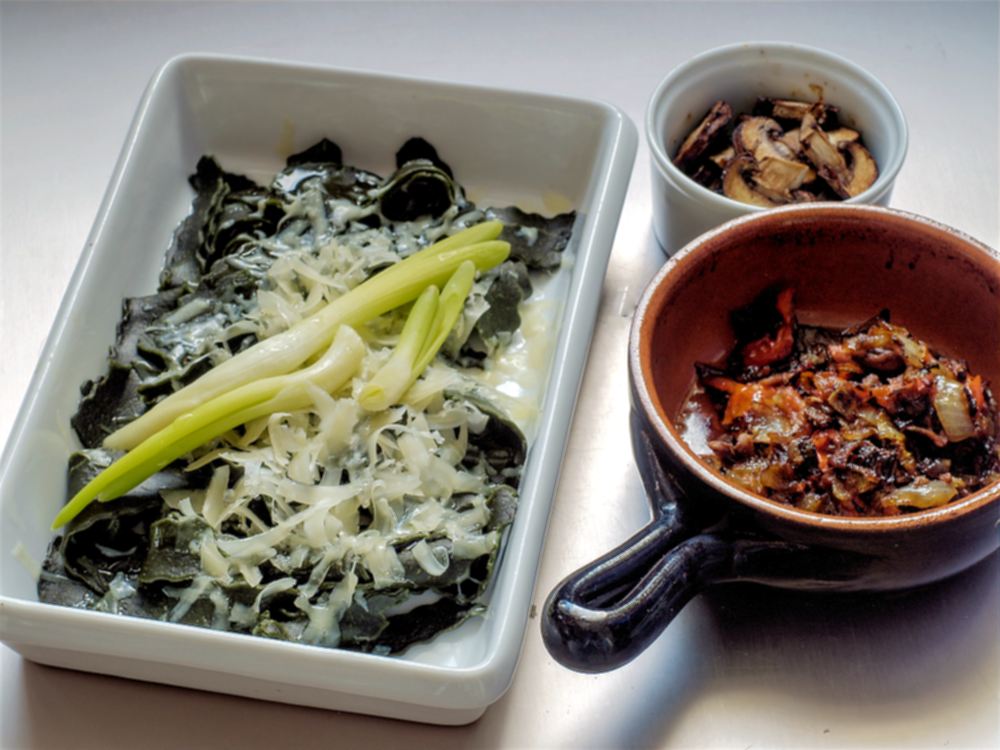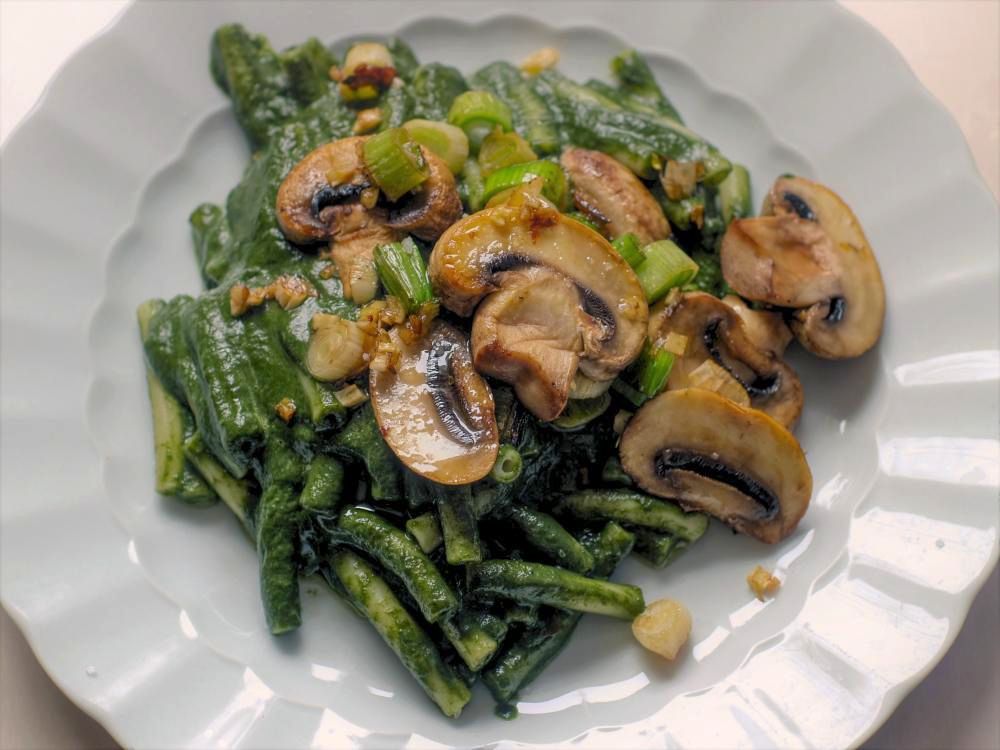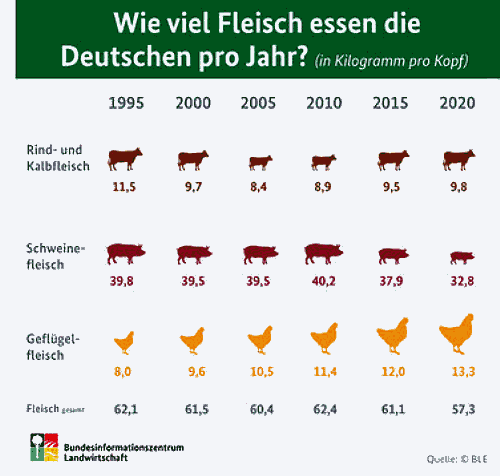Posted on January 28, 2023 by KPBaumgardt
“Food trends” are always interesting, if not quite as exciting as petrol and ticket prices, tank deliveries and international relations, which currently lack the friendly, solidarity element. We have overcome the narrative of the Franco-German hereditary enmity, but with of the peoples’ friendship towards the East, this did not develop so automatically,
with a grassroots-democratic-green mass movement in Russia, our eco*ins*s would have reason to provide development aid on site – but realpolitik doesn’t work that easily.
Let’s save the world alternatively through food policy measures!
Meat consumption in Germany is too high! As is well known, this is accompanied by an insidious risk of cancer. It can be assumed that we all already have this Sentence have read:
“Anyone who eats meat should not consume more than 300 to 600 grams per week.”
In addition to the health reasons that speak for less meat, there is also the ecological problem due to the consumption of resources – “on the other hand” for thousands of millions of people too little and too inferior food, so that more than 10 years ago the WHO suggested insects use and consume as a source of protein.
Apart from poultry, meat consumption is slowly declining. Even more interesting would be the course over 100 years, for example, taking social status into account…
Eating insects is also common practice in some regions of the world, but in this country only in exceptional cases. Our problem is not the lack of protein, but obesity, species-appropriate animal husbandry, monocultures, land use, loss of species, lack of water, dying trees and a few more “problematic fats”.,,
The grill The grill
“The ground house cricket is approved as a food in the EU,” we learn at the daily News – as if common or ground house crickets were jackets and trousers, as if we had no expectation of pleasure from vermin, as if the absence of disgust was normal.
If in future the grilled sausage is called “Grillenwurst”, because grilling on the grill has been known from the language since the Middle Ages (?), we are approaching the story of the biscuits that are made from “human material‘ are turned on and are once more relegated to the unworthy role of ‘objects of technocracy’.
Polemicizing is good when it comes to anxiety issues:
Weltwoche screenshot – here Von der Leyen, Kissinger and Selenskyi are “lumped together”, and the very first assertion is stunk and a lie. Playing on the audience’s fears and disgust like this comes across as vicious hate propaganda intent on eroding the system in which it lives.
I think that insects should have their place as a source of protein where it is species-appropriate, like hopefully on the organic chicken farm.
Anyone who knows from their own experience that something like this can be found “on every corner in Asia” will not make saving Co2 a top priority, but may have the opinion that eating (eating) insects is long overdue and in the interests of progress conventional meat production must be shown alternatives, try to profile them as opinion leaders.
Anyone who thinks that worms and chirping insects contribute a lot to reducing meat consumption is wrong, because what are insects made of if not animal flesh?
When it comes to the factual and practical sources of protein that are still to be developed: there is a large area of plant-based food that tastes good without meat, you just have to put such food on the plate. “Color” and various ingredients can provide variety, Green pasta taste somehow different, and if you dye too much, you get black-green…
 “Spirulina” is the name of the algae whose powder colored the homemade tagliatelle here. You are more likely to be offered elongated, “noodle-like” seaweed, low-calorie alginate noodles and spinach noodles as “seaweed noodles”, which is also why the self-rolled noodle opens up more preparation options than the “ready-made noodle”, which only needs to be cooked unless it’s pre-cooked and expensively included in some frozen convenience ready-to-microwave pasta.
“Spirulina” is the name of the algae whose powder colored the homemade tagliatelle here. You are more likely to be offered elongated, “noodle-like” seaweed, low-calorie alginate noodles and spinach noodles as “seaweed noodles”, which is also why the self-rolled noodle opens up more preparation options than the “ready-made noodle”, which only needs to be cooked unless it’s pre-cooked and expensively included in some frozen convenience ready-to-microwave pasta.
In the enlarged view it is clearer to see that the “Spirulina colored ribbon noodles” were sprinkled with grated cheese. The budding of normal onions is to be understood as a sign of their vitality – two minutes of steaming and careful salting make it a nice change that should not be missed.
A portion of roasted onions with garlic goes well with this and, if necessary, a few anchovy fillets and fried mushrooms round off the dish.
Algae – ancient life form as food of the future
„Algae are increasingly used in the production of cosmetics, food, feed additives, packaging material or biofuel. More and more companies in Europe are getting into commercial algae cultivation with large-scale projects.”
If the information portal “Ökolandbau.de” reports on a new EU organic regulation, which contains regulations for ecological algae cultivation, indicates one thing:
The future of algae in nutrition is virtually assured.
Let’s assume that the relationship between food and what is nourished has not yet been clarified and researched in its essential characteristics and that developmental, libidinal, genetic, social and environmental aspects as well as acquired and learned aspects play together in this relationship…
Could it be that from the fact that algae played a fundamental role as food for other species in fundamental phases of the development of the world, a special “memory” of this food is still “programmed” in us?
Could this mean that eating seaweed leads to above-average or “actual” satiety and prevents a (latent) craving for meat?
That may sound speculative, but the need for globally reduced meat consumption is objective, with a state meat ban It is unthinkable that religious prohibitions are only partially observed and are “wrongly scaled” anyway. Reason-based prohibitions stand in the way of habits, and the few “explanations” that want to describe the path to successful meat renunciation come without them practical examples therefore.
So it is important to start with habits, with new practical examples, and to find out what is or can become ecologically desirable, acceptable in price and popular with the majority.
 „Maceroni with spirulina spinach and mushrooms“
„Maceroni with spirulina spinach and mushrooms“
With this new recipe, you get the feeling that it leads to a particularly long-lasting satiety. Who wants to explain that – for example the inventor of “Kreppel as a fasting food”?
Related posts:
- “OPPOSE!”, prevention paradox, obesity infection, algae miracle, traumatic passages, hunter’s sauce on a vegetable plate
- Slim with the pasta diet – the turbo for losing weight – recipes with pictures
- Chips: The Truth – Life as a Puppet? – solidary publication methods – live heroine myths, productive refugee work, social education
- Spirulina: cultivation and consumption
- Superfood cocoa – nine-euro climate report – creative veganistan
Filed under: General | A comment “
